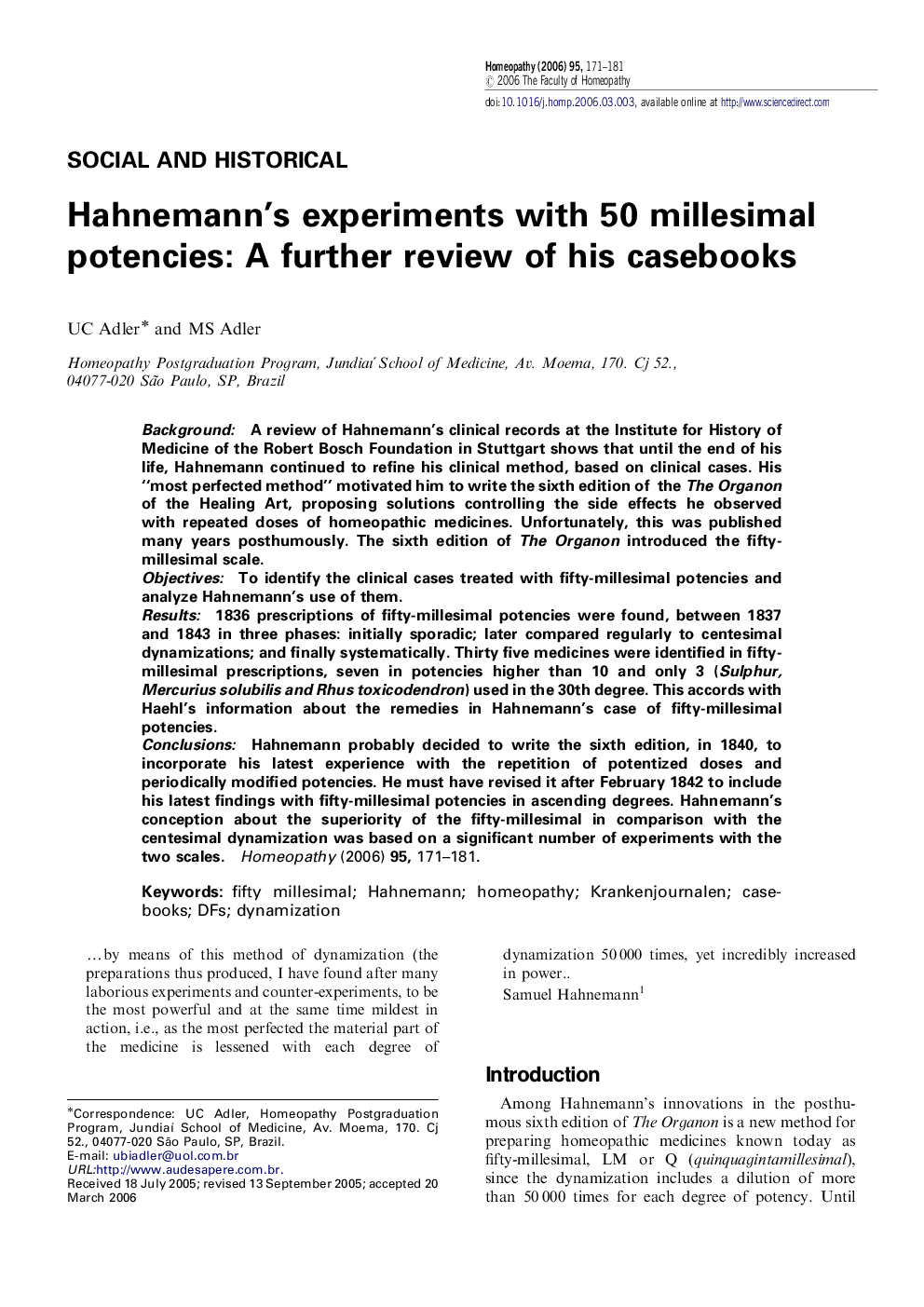| Article ID | Journal | Published Year | Pages | File Type |
|---|---|---|---|---|
| 2629833 | Homeopathy | 2006 | 11 Pages |
BackgroundA review of Hahnemann's clinical records at the Institute for History of Medicine of the Robert Bosch Foundation in Stuttgart shows that until the end of his life, Hahnemann continued to refine his clinical method, based on clinical cases. His “most perfected method” motivated him to write the sixth edition of the The Organon of the Healing Art, proposing solutions controlling the side effects he observed with repeated doses of homeopathic medicines. Unfortunately, this was published many years posthumously. The sixth edition of The Organon introduced the fifty-millesimal scale.ObjectivesTo identify the clinical cases treated with fifty-millesimal potencies and analyze Hahnemann's use of them.Results1836 prescriptions of fifty-millesimal potencies were found, between 1837 and 1843 in three phases: initially sporadic; later compared regularly to centesimal dynamizations; and finally systematically. Thirty five medicines were identified in fifty-millesimal prescriptions, seven in potencies higher than 10 and only 3 (Sulphur, Mercurius solubilis and Rhus toxicodendron) used in the 30th degree. This accords with Haehl's information about the remedies in Hahnemann's case of fifty-millesimal potencies.ConclusionsHahnemann probably decided to write the sixth edition, in 1840, to incorporate his latest experience with the repetition of potentized doses and periodically modified potencies. He must have revised it after February 1842 to include his latest findings with fifty-millesimal potencies in ascending degrees. Hahnemann's conception about the superiority of the fifty-millesimal in comparison with the centesimal dynamization was based on a significant number of experiments with the two scales.
